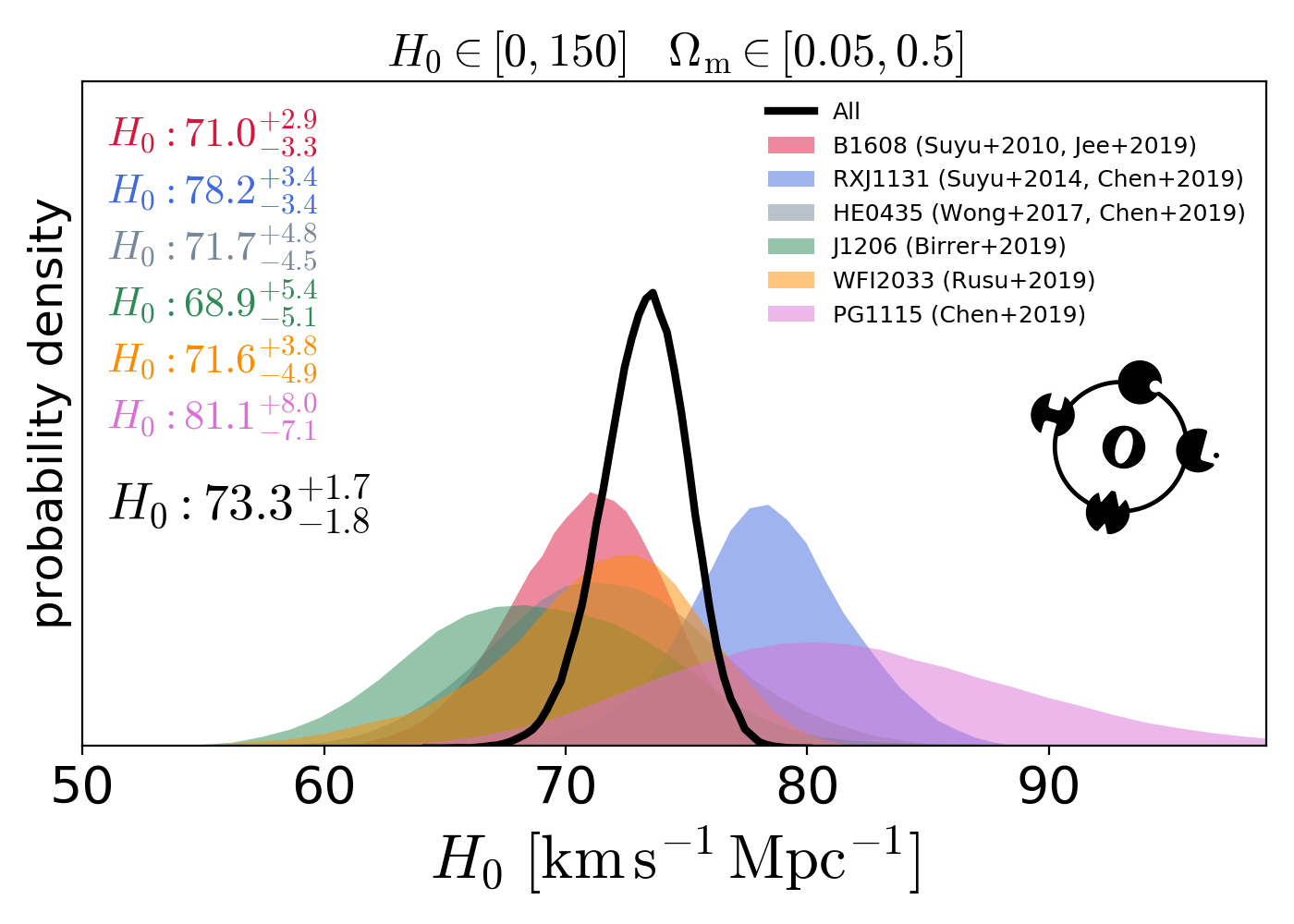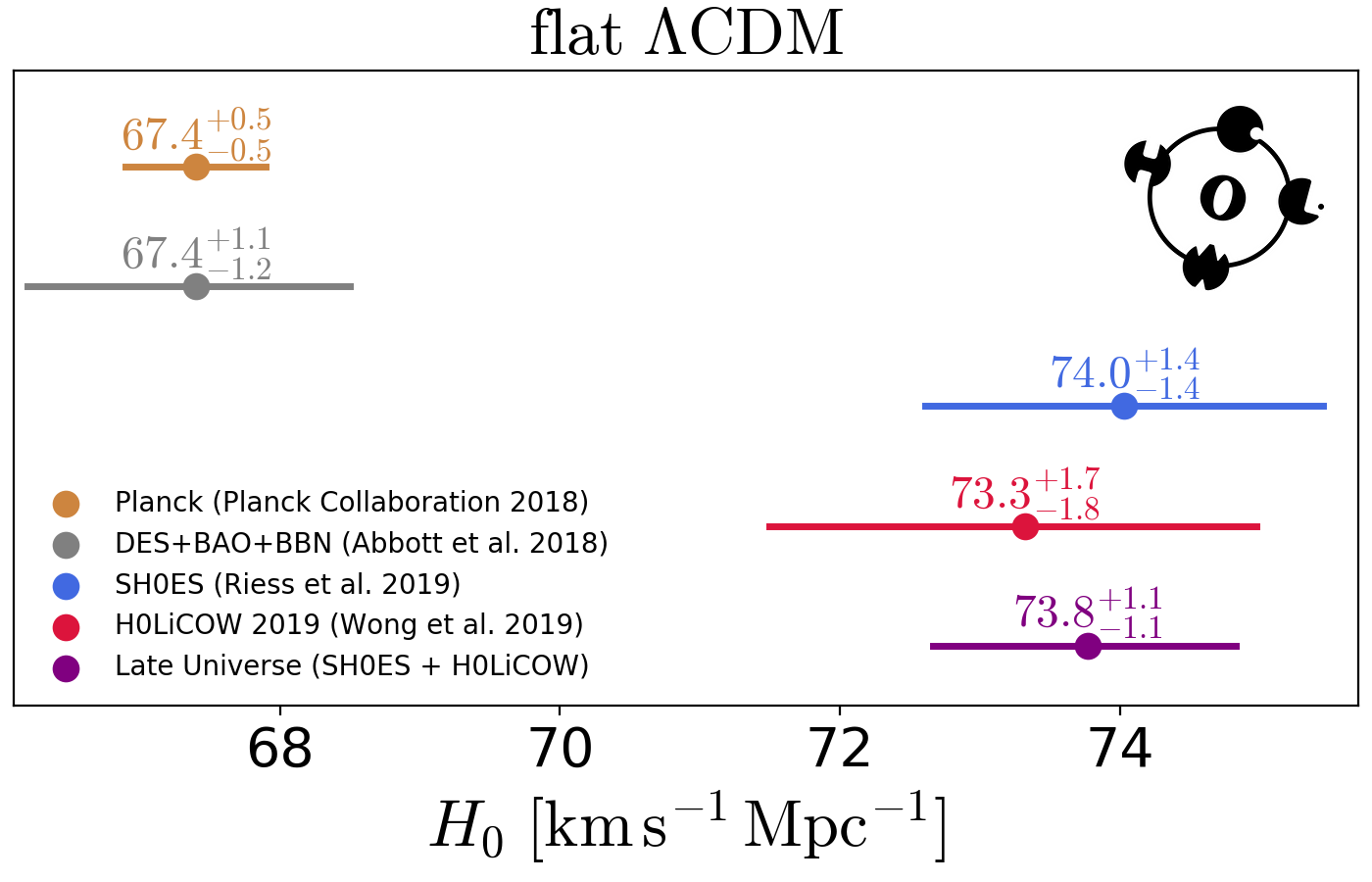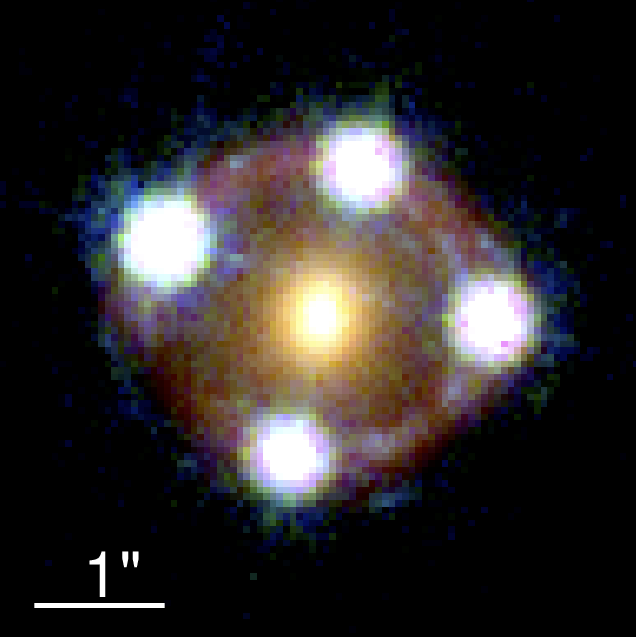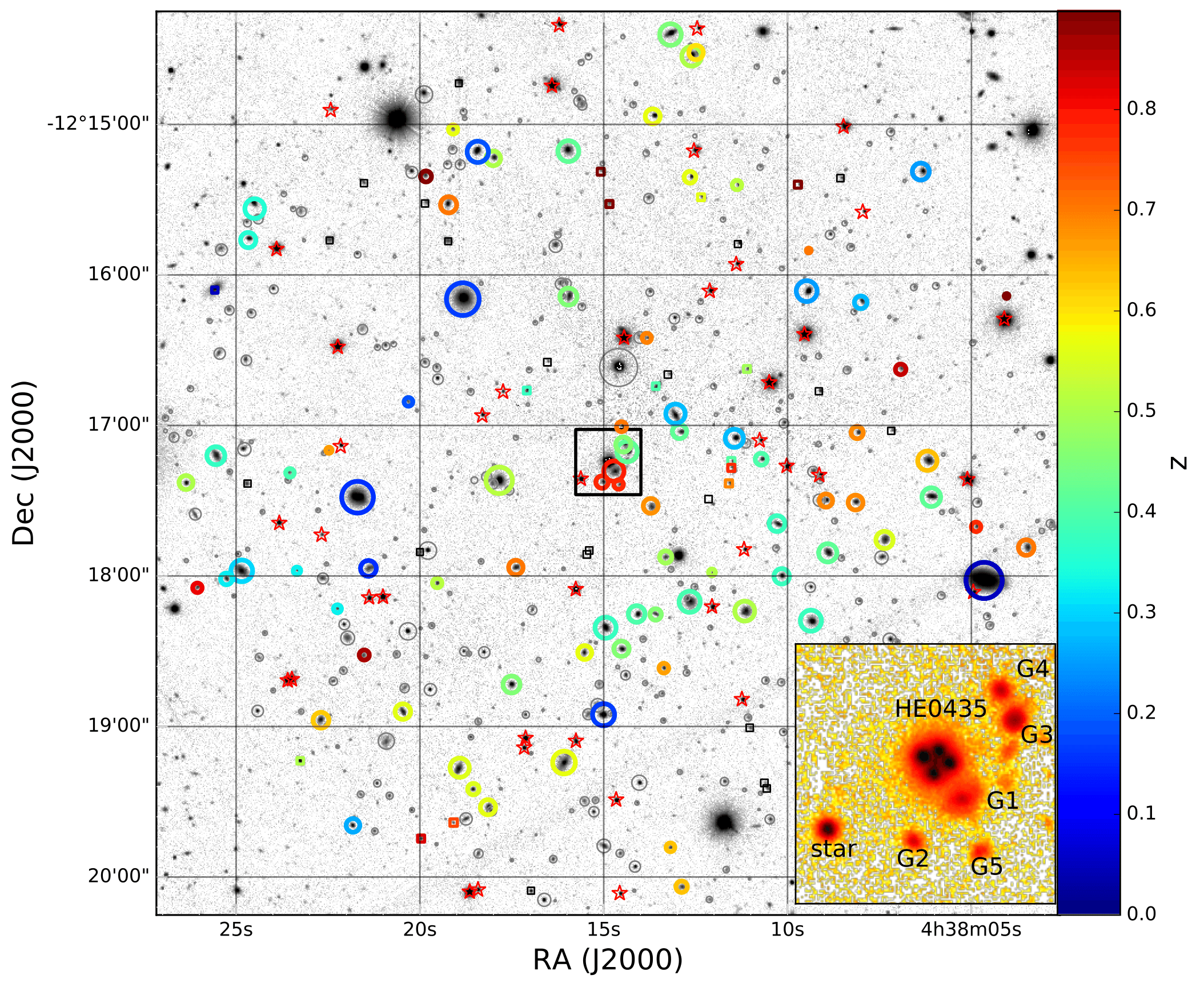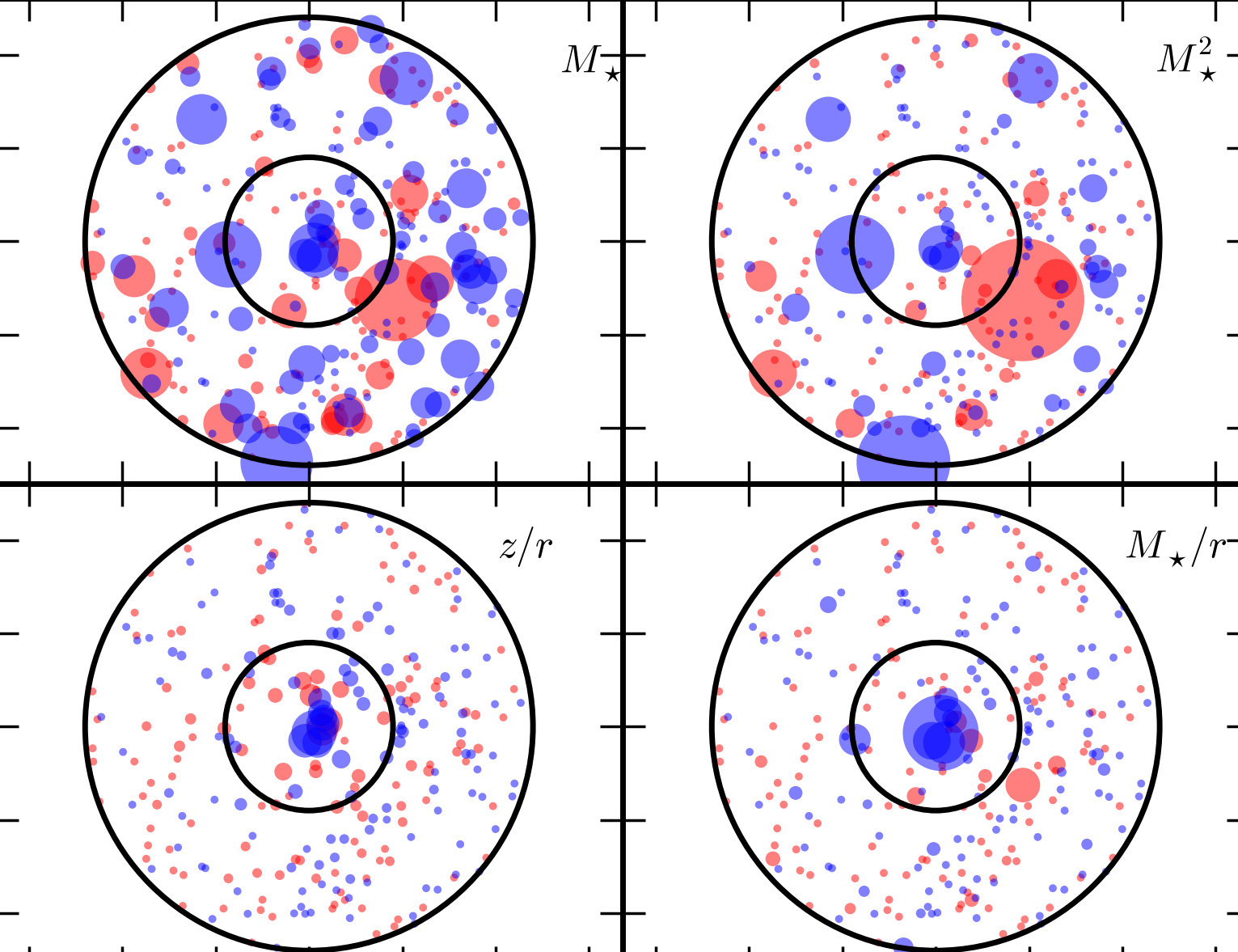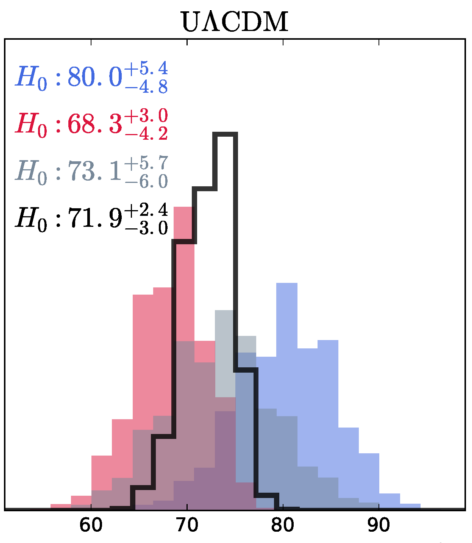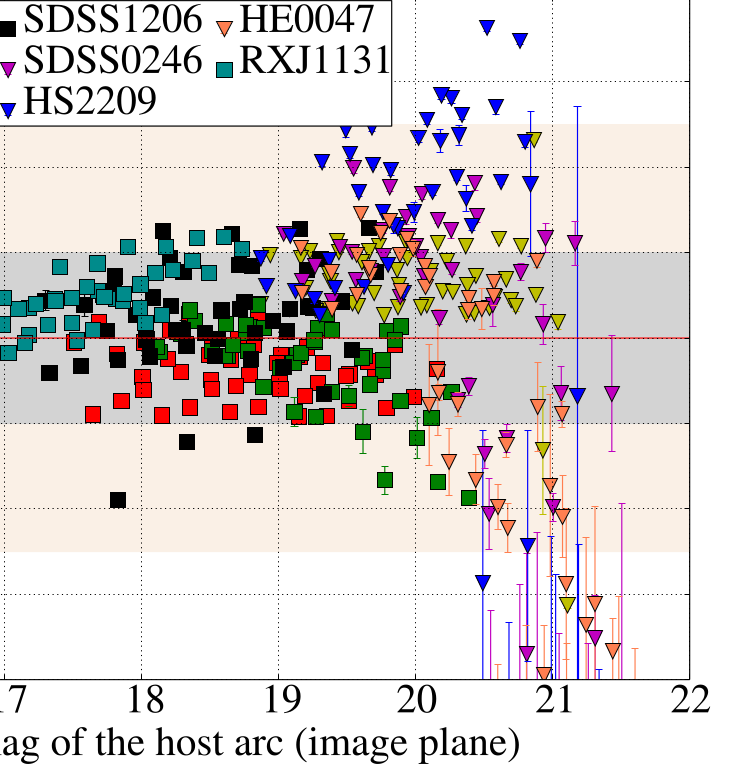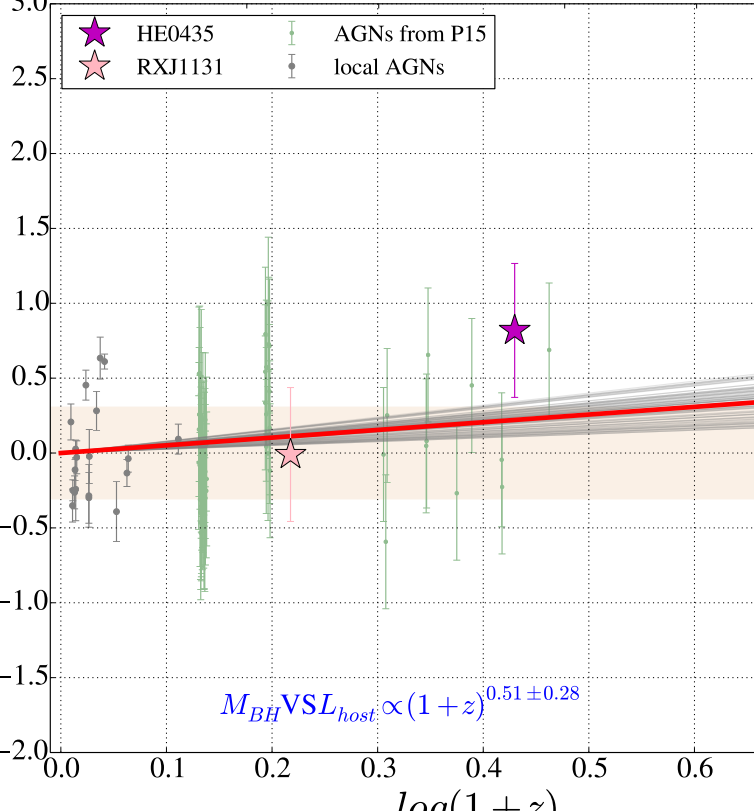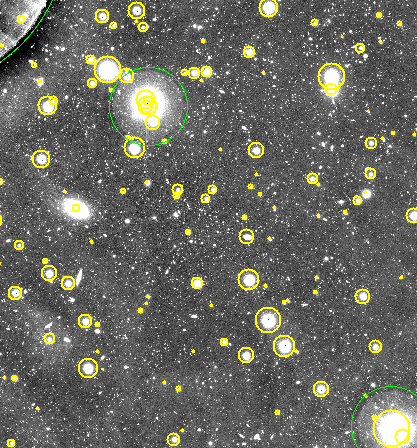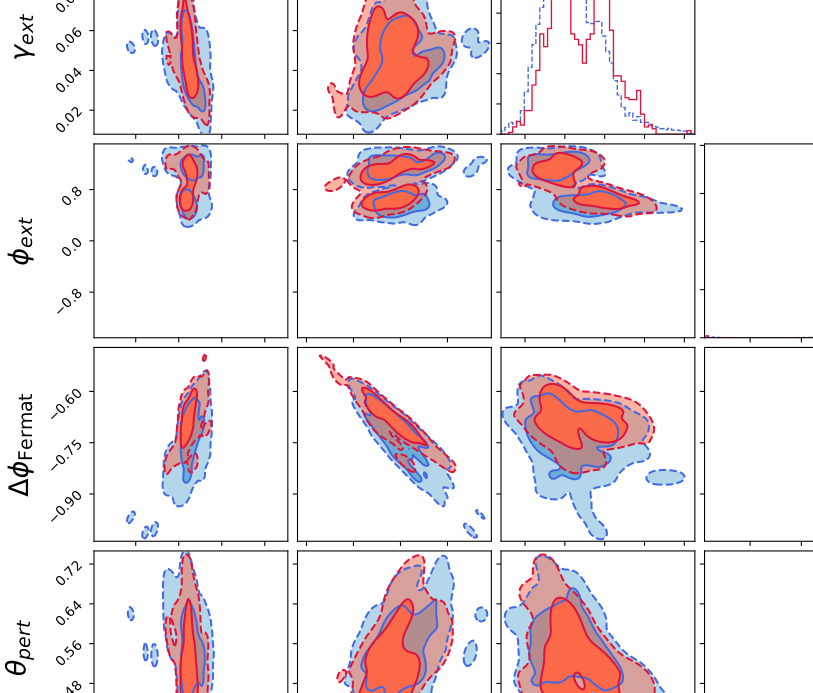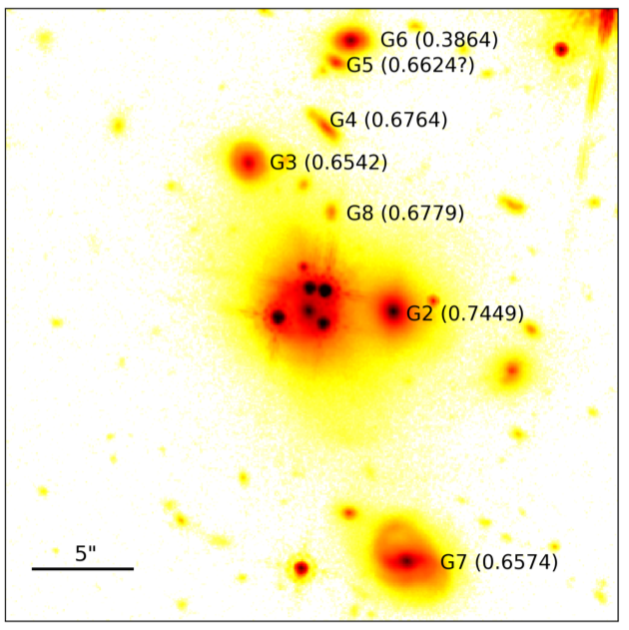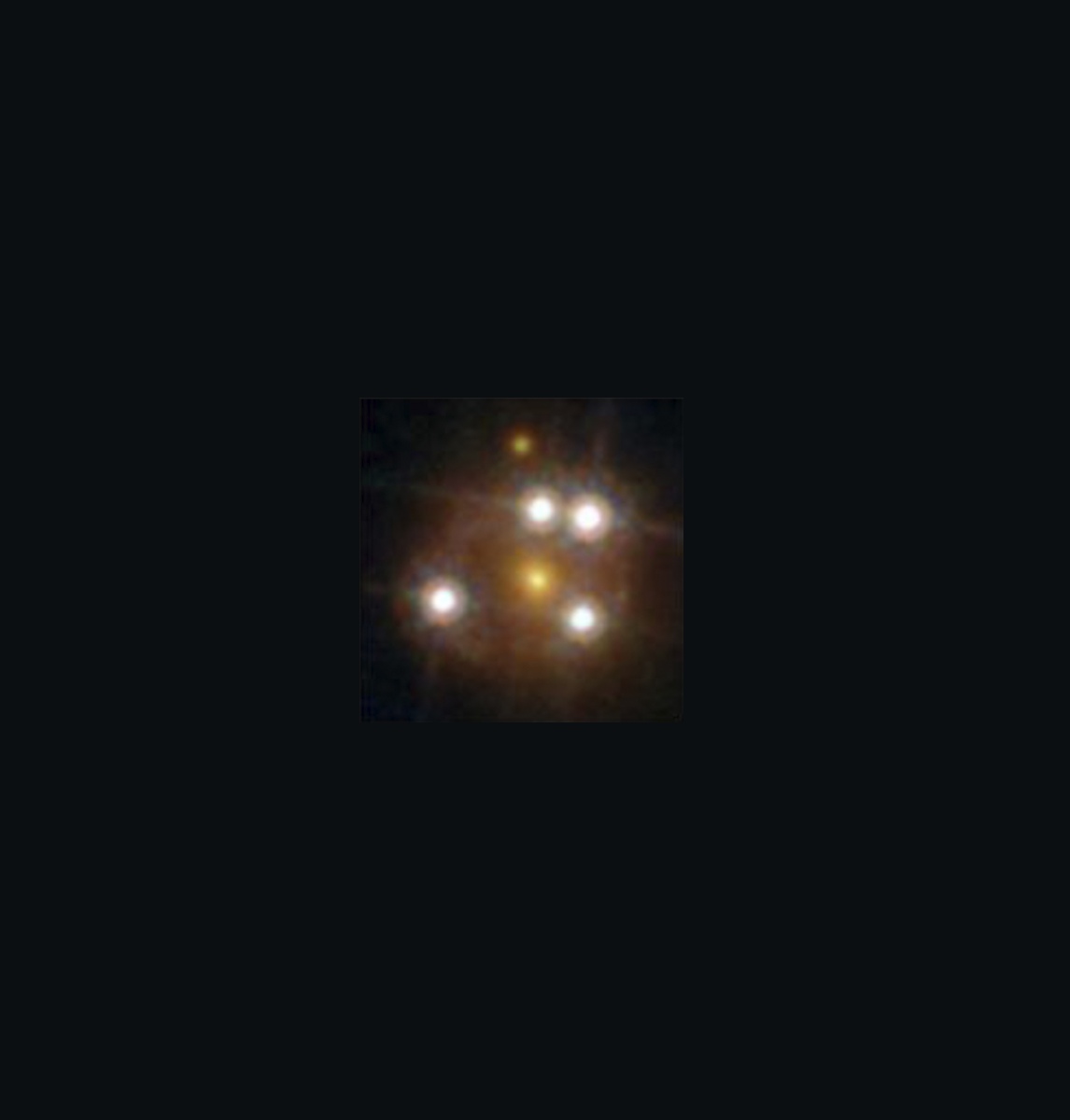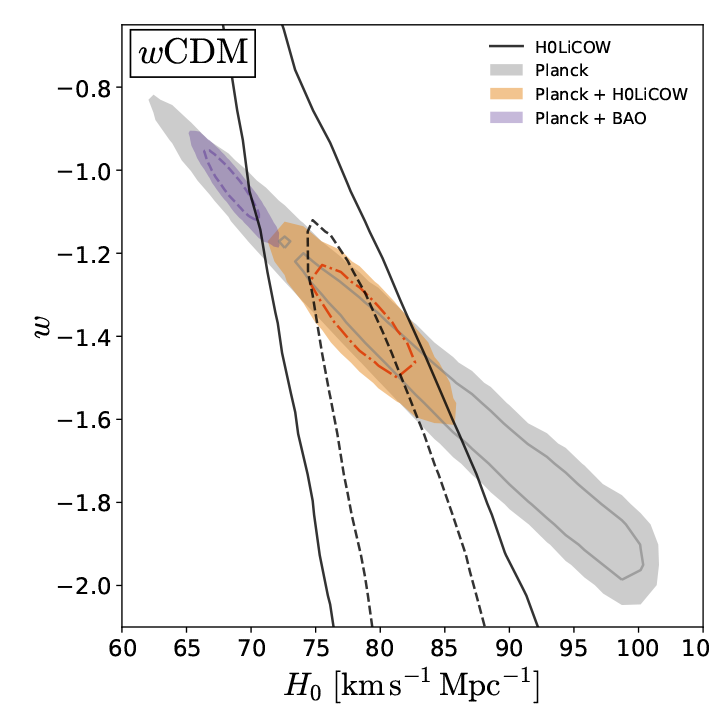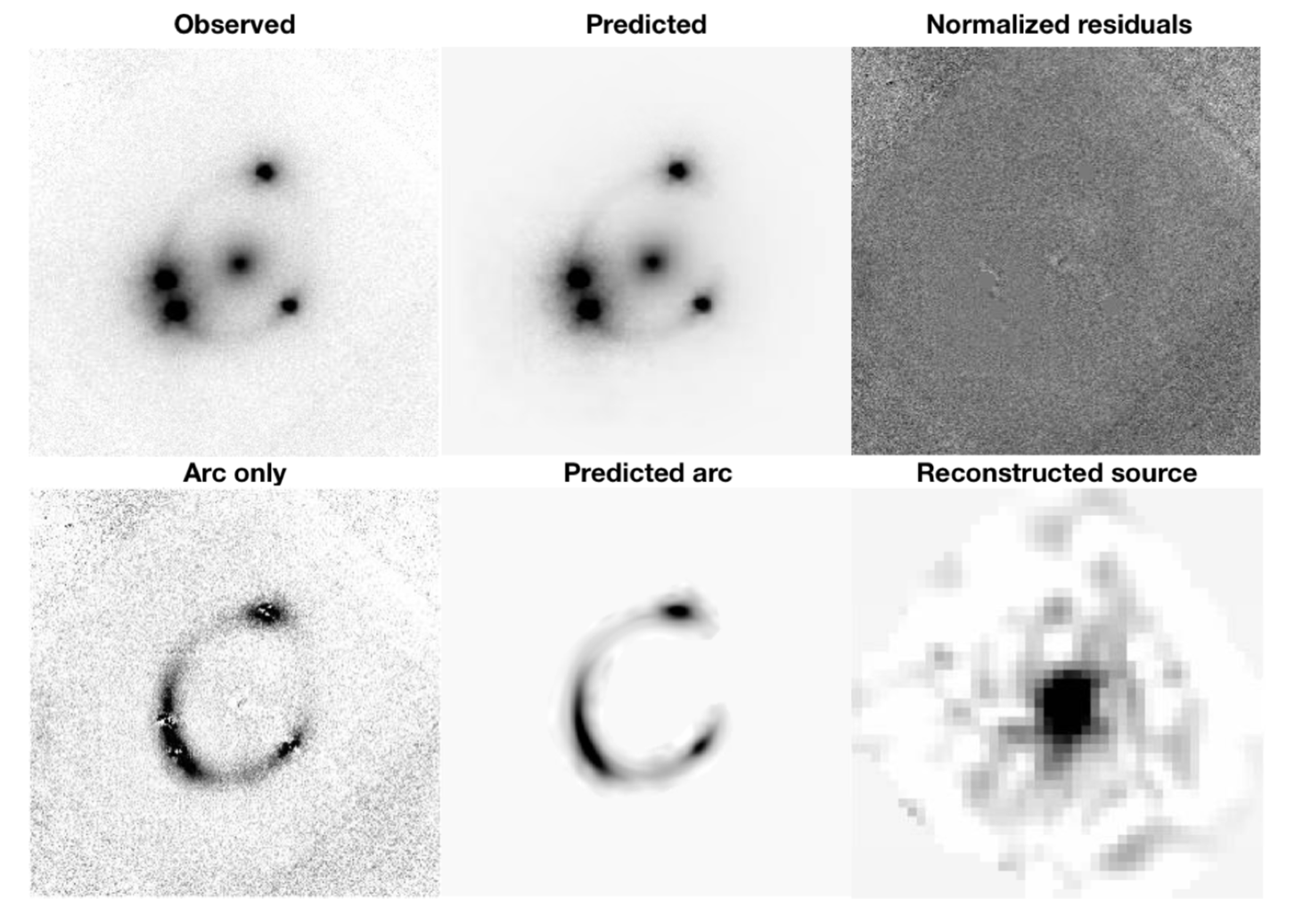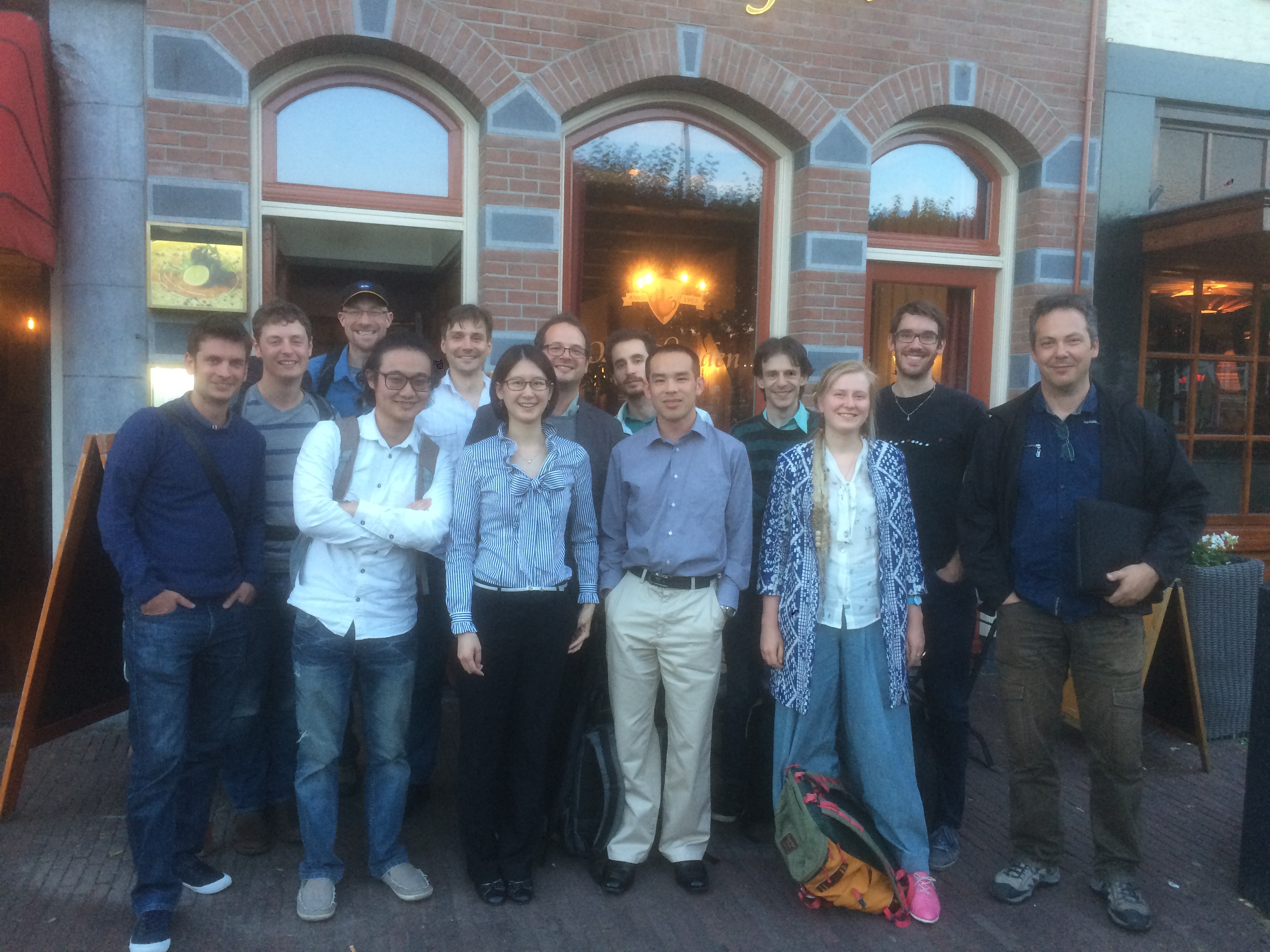H0LiCOW I. H0 Lenses in COSMOGRAIL’s Wellspring: Program Overview.
Strong gravitational lens systems with time delays between the multiple images allow measurements of time-delay distances, which are primarily sensitive to the Hubble constant that is key to probing dark energy, neutrino physics, and the spatial curvature of the Universe, as well as discovering new physics. We present H0LiCOW (H0 Lenses in COSMOGRAIL’s Wellspring), a program that aims to measure H0 with <3.5% uncertainty from five lens systems (B1608+656, RXJ1131−1231, HE0435−1223, WFI2033−4723 and HE 1104−1805)...

